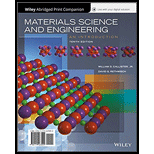
MAT. SCI. & ENG: AN INTO. WILEYPLUS
10th Edition
ISBN: 9781119472001
Author: Callister
Publisher: WILEY
expand_more
expand_more
format_list_bulleted
Question
Chapter 22, Problem 1DP
To determine
To list:
The advantages and disadvantages of the various materials that are used for the container production with the consideration of following aspects:
- Cost of the containers;
- Recyclability of the containers;
- Energy consumed for the production of these containers.
Expert Solution & Answer
Answer to Problem 1DP
The commonly used materials for the production of containers are listed below;
- 1. Glass
- 2. Aluminum
- 3. Polyethylene terephthalate (PET or PETE)
The advantages and disadvantages of these materials are explained below:
Explanation of Solution
Glass:
Advantages:
- Glass is an inexpensive material and it is readily available.
- It is chemically non-reactive material.
- It is the transparent material that gives a good appearance.
- The recycling process of glass does not require much energy.
- Increased and rapid production of recycled glass result in more usage and thereby reducing the pollutant emission.
Disadvantages:
- Glass is a non-bio degradable material.
- Sorting of salvaged glass takes more time and is an expensive process that reduces its market value.
Aluminum:
Advantages:
- Aluminum is a non-corrosive material compared to ferrous materials.
- Aluminum is easily available material.
- It has the capacity to withstand higher temperatures.
- Low energy is required to recycle the aluminum containers.
Disadvantages:
- They are non-refillable.
- Aluminum is the non-bio degradable material.
- It promotes the chemical reaction between the packed material and container. Tin coatings are provided to stop the chemical reaction.
Polyethylene terephthalate (PET or PETE):
Advantages:
- They possess good optical clarity.
- It is the light-weighted material compared to the others.
- It is a shatter-proof material.
- The PET containers are easy to manufacture (blow molding).
- It is chemically non-reactive material.
Disadvantages:
- They are non-refillable.
- PETs are the non-biodegradable materials.
Want to see more full solutions like this?
Subscribe now to access step-by-step solutions to millions of textbook problems written by subject matter experts!
Students have asked these similar questions
(read image) (answer given)
11-5. Compute all the dimensional changes for the steel bar
when subjected to the loads shown. The proportional limit of the
steel is 230 MPa.
265 kN
100 mm
600 kN
25 mm thickness
X
Z
600 kN
450 mm
E=207×103 MPa; μ= 0.25
265 kN
T₁
F
Rd = 0.2 m
md =
2 kg
T₂
Tz1
Rc = 0.4 m
mc = 5 kg
m = 3 kg
Chapter 22 Solutions
MAT. SCI. & ENG: AN INTO. WILEYPLUS
Knowledge Booster
Similar questions
- 15 OF 25 QUESTIONS REMAININ Consider the following code. You want to print the array values in the div as an ordered list. What statement would you use to replace the comment in the code below? Two J // what statement goes here? - لبية للالكالا const app = Vue.createApp({ data (( return ( lunch: [ 'Burrito', 'Soup', 'Pizza', 'Rice' }) app.mount ('#app6') - -arrow_forward2. Find a basis of solutions by the Frobenius method. Try to identify the series as expansions of known functions. (x + 2)²y" + (x + 2)y' - y = 0 ; Hint: Let: z = x+2arrow_forward1. Find a power series solution in powers of x. y" - y' + x²y = 0arrow_forward
- 3. Find a basis of solutions by the Frobenius method. Try to identify the series as expansions of known functions. 8x2y" +10xy' + (x 1)y = 0 -arrow_forward2. Using the approximate method, hand sketch the Bode plot for the following transfer functions. a) H(s) = 10 b) H(s) (s+1) c) H(s): = 1 = +1 100 1000 (s+1) 10(s+1) d) H(s) = (s+100) (180+1)arrow_forwardPlease explain all your steps. Thank you.arrow_forward
- Hello I was going over the solution for this probem and I'm a bit confused on the last part. Can you please explain to me 1^4 was used for the Co of the tubular cross section? Thank you!arrow_forwardQ4: Write VHDL code to implement the finite-state machine described by the state Diagram in Fig. 1. Fig. 1arrow_forward1. Consider the following feedback system. Bode plot of G(s) is shown below. Phase (deg) Magnitude (dB) -50 -100 -150 -200 0 -90 -180 -270 101 System: sys Frequency (rad/s): 0.117 Magnitude (dB): -74 10° K G(s) Bode Diagram System: sys Frequency (rad/s): 36.8 Magnitude (dB): -99.7 System: sys Frequency (rad/s): 20 Magnitude (dB): -89.9 System: sys Frequency (rad/s): 20 Phase (deg): -143 System: sys Frequency (rad/s): 36.8 Phase (deg): -180 101 Frequency (rad/s) a) Determine the range of K for which the closed-loop system is stable. 102 10³ b) If we want the gain margin to be exactly 50 dB, what is value for K we should choose? c) If we want the phase margin to be exactly 37°, what is value of K we should choose? What will be the corresponding rise time (T) for step-input? d) If we want steady-state error of step input to be 0.6, what is value of K we should choose?arrow_forward
arrow_back_ios
SEE MORE QUESTIONS
arrow_forward_ios
Recommended textbooks for you
 MATLAB: An Introduction with ApplicationsEngineeringISBN:9781119256830Author:Amos GilatPublisher:John Wiley & Sons Inc
MATLAB: An Introduction with ApplicationsEngineeringISBN:9781119256830Author:Amos GilatPublisher:John Wiley & Sons Inc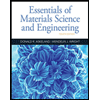 Essentials Of Materials Science And EngineeringEngineeringISBN:9781337385497Author:WRIGHT, Wendelin J.Publisher:Cengage,
Essentials Of Materials Science And EngineeringEngineeringISBN:9781337385497Author:WRIGHT, Wendelin J.Publisher:Cengage,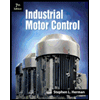 Industrial Motor ControlEngineeringISBN:9781133691808Author:Stephen HermanPublisher:Cengage Learning
Industrial Motor ControlEngineeringISBN:9781133691808Author:Stephen HermanPublisher:Cengage Learning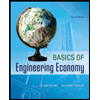 Basics Of Engineering EconomyEngineeringISBN:9780073376356Author:Leland Blank, Anthony TarquinPublisher:MCGRAW-HILL HIGHER EDUCATION
Basics Of Engineering EconomyEngineeringISBN:9780073376356Author:Leland Blank, Anthony TarquinPublisher:MCGRAW-HILL HIGHER EDUCATION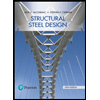 Structural Steel Design (6th Edition)EngineeringISBN:9780134589657Author:Jack C. McCormac, Stephen F. CsernakPublisher:PEARSON
Structural Steel Design (6th Edition)EngineeringISBN:9780134589657Author:Jack C. McCormac, Stephen F. CsernakPublisher:PEARSON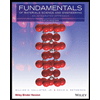 Fundamentals of Materials Science and Engineering...EngineeringISBN:9781119175483Author:William D. Callister Jr., David G. RethwischPublisher:WILEY
Fundamentals of Materials Science and Engineering...EngineeringISBN:9781119175483Author:William D. Callister Jr., David G. RethwischPublisher:WILEY

MATLAB: An Introduction with Applications
Engineering
ISBN:9781119256830
Author:Amos Gilat
Publisher:John Wiley & Sons Inc

Essentials Of Materials Science And Engineering
Engineering
ISBN:9781337385497
Author:WRIGHT, Wendelin J.
Publisher:Cengage,

Industrial Motor Control
Engineering
ISBN:9781133691808
Author:Stephen Herman
Publisher:Cengage Learning

Basics Of Engineering Economy
Engineering
ISBN:9780073376356
Author:Leland Blank, Anthony Tarquin
Publisher:MCGRAW-HILL HIGHER EDUCATION

Structural Steel Design (6th Edition)
Engineering
ISBN:9780134589657
Author:Jack C. McCormac, Stephen F. Csernak
Publisher:PEARSON

Fundamentals of Materials Science and Engineering...
Engineering
ISBN:9781119175483
Author:William D. Callister Jr., David G. Rethwisch
Publisher:WILEY